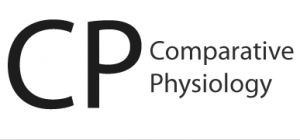- Turn heater on in microscope room (1 hour before)
- Turn on microscope, fluorescent lamp, imaging computer, open Nikon NIS-Elements Software
- Put small tube of media (5 mL) in warmer (15 min before start)
- Prep microscope area – remove slide holder, clean lenses, remove extra lenses
- Make sure camera is in proper orientation.
- Prep worksheets, fill out headers
- Clean stretcher, adjust starting position (about 19 mm clamp to clamp)
- Check for: coverslips (18×9 mm), 200 μL pipet & tips, filter paper strips, calipers
- Open Excel spreadsheet for quick printing of strain values
- Add HEPES to media (0.024 g in 5 mL for 20 mM)
- Carefully remove strip from culture dish with forceps
- Dry bottom of strip on filter paper
- Place strip on clamp platforms and adjust position until perfectly straight
- Place clamps with hex bolts on top and very lightly tighten all screws
- Incrementally increase clamping pressure of all screws until maxed out using low-torque end of hex wrench.
- Add a drop of media to keep cells from drying out
- Adjust micrometer until membrane is just taut, set value to zero (mm)
- Tip stretcher one way and dry end of strip with edge of filter paper.
- Place Vaseline barrier next to clamp using syringe
- Repeat at other end by tipping the other way
- Grease sides of silastic strip using Vaseline and Q-tip
- Change media using pipet
- Add coverslip (no air bubbles) – not necessary if using water immersion lens
- Measure resting length using calipers, enter into worksheet and print
- Mount stretcher on stageFocus on cells using 20x lens in DIC (40x lens if using water immersion)
- Set up Kohler illumination
- Make sure media doesn’t dry out! Replace using long-tipped pipet if necessary.
- It is especially important that there is plenty of media during straining. Otherwise cells can be sheared by the coverslip. Excess media can be removed via pipet or with filter paper. Drying is less likely with the water immersion 40x lens, but the media should still be changed periodically even with this setup.
- Collect images and movies using NIS-Elements software.
- Remove cell stretcher and clean using 70% EtOH.
- Replace slide holder on stage.
- Save images to proper folder, backup keepers onto My Book shared drive.
- Return lenses, shut down microscope.
- Dispose of media in bleach beaker, strips and culture dishes in Biohazards waste.
